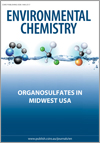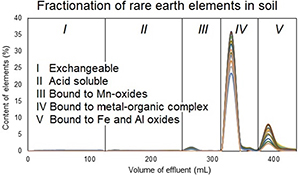EN19135Origin of arsenolipids in sediments from Great Salt Lake
 , Georg Raber, Kenneth B. Jensen, Florence Schubotz, Eric S. Boyd and Kevin A. Francesconi
, Georg Raber, Kenneth B. Jensen, Florence Schubotz, Eric S. Boyd and Kevin A. Francesconi
Environmental context. Arsenic is a globally distributed element, occurring in various chemical forms with toxicities ranging from harmless to highly toxic. We examined sediment samples from Great Salt Lake, an extreme salt environment, and found a variety of organoarsenic species not previously recorded in nature. These new compounds are valuable pieces in the puzzle of how organisms detoxify arsenic, and in our understanding of the global arsenic cycle.
EN19135 Abstract | EN19135 Full Text | EN19135PDF (2.2 MB) | EN19135Supplementary Material (1.4 MB) Open Access Article





